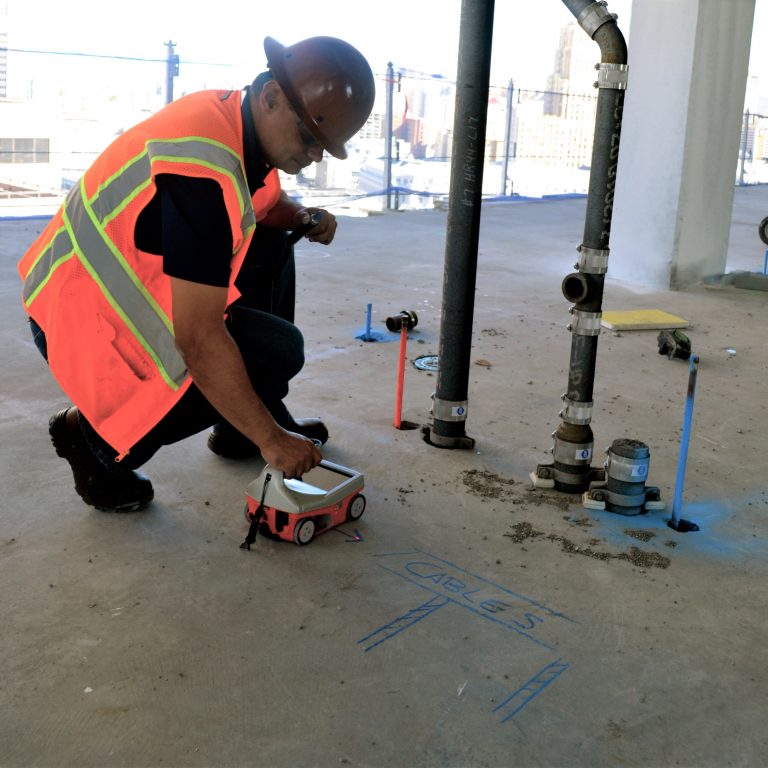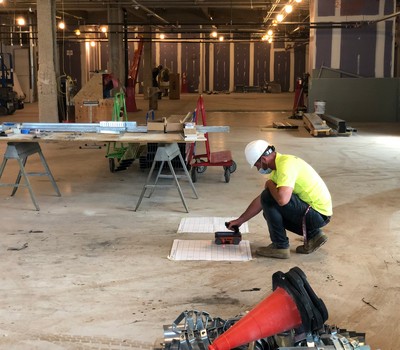Reveal the Transformative Power of Concrete Scanning in Optimizing Performance and Safety
Concrete scanning has actually arised as a crucial device in the building industry, providing unparalleled advantages in enhancing job performance and guaranteeing safety criteria. By utilizing sophisticated modern technology, concrete scanning allows specialists to see beyond the surface area, revealing covert complexities that can impact the structural honesty of a building. The transformative power of concrete scanning lies in its capacity to offer real-time information and detailed insights, reinventing just how projects are intended and implemented. As we look into the ins and outs of this cutting-edge strategy, a world of possibilities opens, showcasing a brand-new period of building and construction methods that focus on accuracy and security.
Importance of Concrete Scanning
Ensuring the architectural honesty and safety and security of building and construction jobs begins with the essential action of performing detailed concrete scanning. Concrete scanning is a non-destructive technique used to detect and map subsurface components within concrete frameworks. This procedure is vital in identifying possible risks, such as rebar, post-tension cable televisions, and channels, that may be concealed within the concrete. By using advanced technologies like ground-penetrating radar (GPR) and electromagnetic induction, construction groups can properly locate these aspects without triggering any damages to the structure.
Furthermore, concrete scanning helps in enhancing project timelines and budget plan by preventing unforeseen prices and hold-ups that might develop due to unanticipated blockages within the concrete. Eventually, spending in comprehensive concrete scanning is a proactive approach that boosts both performance and safety in building and construction tasks.
Just How Concrete Scanning Functions
Concrete scanning runs as an essential device in building projects by utilizing advanced innovations to discover and map subsurface components without triggering architectural damage. Ground Passing Through Radar (GPR) and Electromagnetic Induction (EMI) are 2 primary techniques made use of in concrete scanning.
Throughout the scanning process, the data accumulated is examined in real-time, allowing instant recognition of prospective risks or barriers beneath the surface area. This details aids in decision-making, making certain that building tasks proceed safely and successfully. Additionally, 3D imaging software program can be utilized to produce detailed maps of the subsurface aspects, better improving job preparation and execution. By utilizing these innovative innovations, concrete scanning considerably minimizes the threat of costly damages and injuries on building and construction websites.
Benefits of Concrete Scanning
Utilizing sophisticated scanning innovations in building tasks offers a wide range of benefits, improving both effectiveness and security on-site. Among the main benefits of concrete scanning is the ability to spot and find ingrained items such as rebar, post-tension cable televisions, and channels accurately. By identifying these elements before exploration or reducing into concrete structures, the danger of unintended strikes is considerably decreased, avoiding potential injuries to employees and damage to the structure itself. Additionally, concrete scanning aids in planning and designing better, as it gives specific details about the area and deepness of structural parts.

Situation Researches: Concrete Scanning Success

In one view more instance, a building company utilized 3D concrete scanning to evaluate the problem of aging concrete frameworks in a historic structure. The comprehensive scans provided beneficial understandings right into the degree of wear and tear and assisted prioritize upkeep efforts effectively. By proactively attending to areas of problem recognized via scanning, the firm was able to prolong the life expectancy of the framework and make certain passenger safety.
These study underscore the transformative power of concrete scanning in improving efficiency, accuracy, and safety and security in construction jobs.
Carrying Out Concrete Scanning in Projects
Applying sophisticated scanning modern technologies throughout building and construction projects has actually become increasingly essential for boosting precision and security. By incorporating concrete scanning into job planning and implementation, building and construction teams can identify possible hazards, such as rebar or post-tension cords, hidden within concrete structures. This positive technique decreases the risk of crashes, hold-ups, and costly rework, inevitably causing much more efficient project timelines and budgets.
To carry out concrete scanning effectively, job supervisors must team up closely with experienced scanning experts to establish the most suitable scanning strategies for the particular job needs. Engaging scanning experts from the onset of a project allows the team to produce thorough scanning plans that deal with key locations of problem and make certain extensive information collection.
Furthermore, incorporating concrete scanning into regular job workflows can enhance decision-making processes, as real-time check information supplies prompt insights into the condition of concrete frameworks - Concrete Scanning. This data-driven strategy facilitates notified analytical and allows groups to make changes immediately, fostering a culture of efficiency and safety and security throughout the task lifecycle

Verdict
In verdict, concrete scanning plays a critical duty in enhancing efficiency and security in building projects. By using advanced innovation to find and map out underlying structures within concrete, this procedure helps to stop expensive page errors, ensure structural stability, and reduce risks on website. With the ability to discover concealed aspects and offer accurate data, concrete scanning shows to be an important tool for maximizing job outcomes and taking full advantage of total success.
Concrete scanning is a non-destructive method utilized to discover and map subsurface elements from this source within concrete structures. Furthermore, concrete scanning helps in maximizing job timelines and budget plan by preventing unanticipated prices and hold-ups that may emerge due to unexpected obstructions within the concrete. One remarkable instance study includes a large-scale remodelling task where concrete scanning played a crucial function in making certain job success.In another instance, a construction business used 3D concrete scanning to analyze the problem of maturing concrete structures in a historical building. By incorporating concrete scanning right into job preparation and execution, building and construction teams can identify prospective dangers, such as rebar or post-tension cords, concealed within concrete structures.
Comments on “Precision and Precision in Concrete Scanning Solutions”